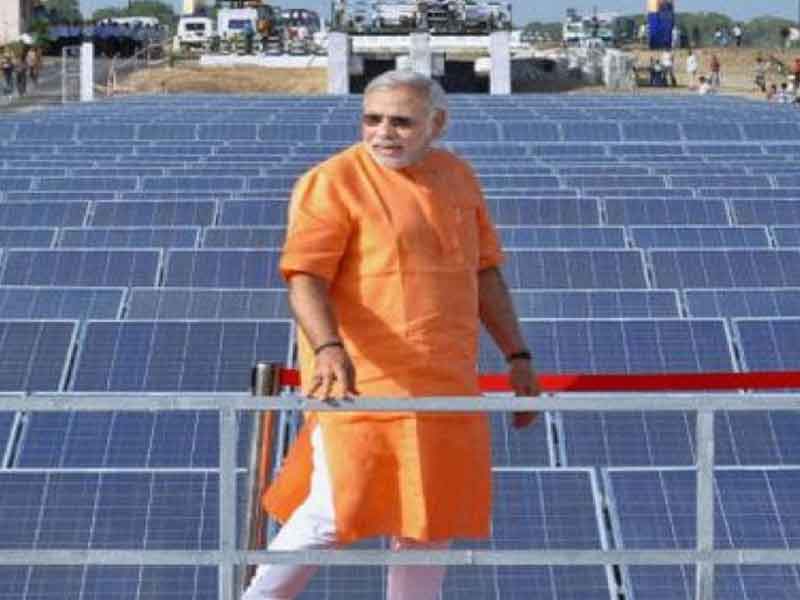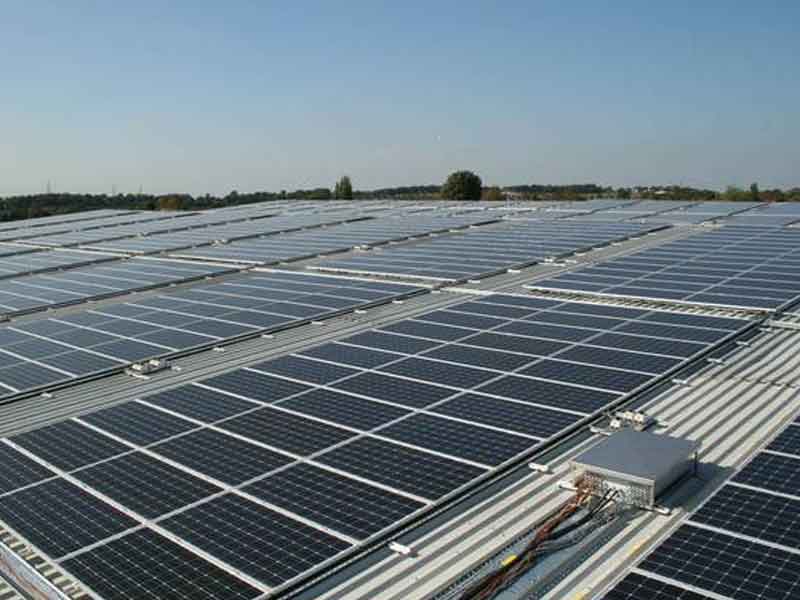Introduction
Power is one of the most critical components of infrastructure crucial for the economic growth and welfare of nations. The existence and development of adequate infrastructure is essential for sustained growth of the Indian economy.
India’s power sector is one of the most diversified in the world. Sources of power generation range from conventional sources such as coal, lignite, natural gas, oil, hydro and nuclear power to viable non-conventional sources such as wind, solar, and agricultural and domestic waste. Electricity demand in the country has increased rapidly and is expected to rise further in the years to come. In order to meet the increasing demand for electricity in the country, massive addition to the installed generating capacity is required.
Market Size
Indian power sector is undergoing a significant change that has redefined the industry outlook. Sustained economic growth continues to drive electricity demand in India. The Government of India’s focus on attaining ‘Power For All’ has accelerated capacity addition in the country. At the same time, the competitive intensity is increasing at both the market and supply sides (fuel, logistics, finances, and manpower).
The Planning Commission’s 12th Five-Year Plan estimates total domestic energy production to reach 669.6 million tonnes of oil equivalent (MTOE) by 2016–17 and 844 MTOE by 2021–22. By 2030–35, energy demand in India is projected to be the highest among all countries according to the 2014 energy outlook report by British oil giant, BP.
As of November 2015, total thermal installed capacity stood at 196.2 gigawatt (GW), while hydro and renewable energy installed capacity totaled 42.6 GW and 37.4 GW, respectively. At 5.8 GW, nuclear energy capacity remained broadly constant compared with the previous year. India's rooftop solar capacity addition grew 66 per cent from last year to reach 525 Mega Watts (MW), and has the potential to grow up to 6.5 giga watts (GW)1. India’s wind power capacity, installed in FY2016, is estimated to increase 20 per cent over last year to 2,800 Mega Watt (MW)2, led by favourable policy support that has encouraged both independent power producers (IPP) and non-IPPs.
India’s wind energy market is expected to attract investments totalling Rs 1,00,000 crore (US$ 15.7 billion) by 2020, and wind power capacity is estimated to almost double by 2020 from over 23,000 MW in June 2015, with an addition of about 4,000 MW per annum in the next five years.
Investment Scenario
Around 293 global and domestic companies have committed to generate 266 GW of solar, wind, mini-hydel and biomass-based power in India over the next 5–10 years. The initiative would entail an investment of about US$ 310–350 billion. Between April 2000 and September 2015, the industry attracted US$ 9.97 billion in Foreign Direct Investment (FDI).
Some major investments and developments in the Indian power sector are as follows:- SunEdison, world’s largest renewable energy company, plans to continue its focus on ‘Make in India’ by further reducing the cost of renewable energy and developing over 15 gigawatts (GW) of wind and solar projects in the country by 2022.
- ThyssenKrupp India, the Indian arm of the German engineering conglomerate, plans to make high-grade environment-friendly boilers which use less fuel, for the Indian power sector by collaborating with a foreign company.
- Aditya Birla Group has announced a partnership with the Abraaj Group, a leading investor in global growth markets, to build a large-scale renewable energy platform that will develop utility-scale solar power plants in India.
- Sterlite Grid, India’s largest private operator of transmission systems, is joining hands with US major — Burn & McDonnell for its Rs 3,000-crore (US$ 462.5 million) power transmission project in the Kashmir valley.
- Inox Wind Ltd, a subsidiary of Gujarat Fluorochemicals, a wind energy solutions provider, plans to double its manufacturing capacity to 1,600 MW at a total investment of Rs 200 crore (US$ 31.6 million) by the end of the next financial year.
- The Dilip Shanghvi family, founders of Sun Pharma, acquired 23 per cent stake in Suzlon Energy, with a preferential issue of fresh equity for Rs 1,800 crore (US$ 284.8 million).
- Reliance Power Ltd signed an accord with the Government of Rajasthan for developing 6,000 MW of solar power projects in the state over the next 10 years.
- Hilliard Energy plans to invest Rs 3,600 crore (US$ 600 million) in Ananthapur district of Andhra Pradesh in the solar and wind power sector for the generation of 650 MW of power.
Solar technology provider SunEdison signed a definitive agreement to acquire Continuum Wind Energy, Singapore, with assets in India. The company, headquartered in Belmont, California, would take over 242 MW of operating wind assets that Continuum owns and operates in Maharashtra and Gujarat as well as 170 MW of assets under construction.
Japanese internet and telecommunications giant SoftBank, along with Bharti Enterprises (of Sunil Mittal) and Taiwanese manufacturing giant Foxconn, plan to invest US$ 20 billion in solar energy projects in India.
Government Initiatives
The Government of India has identified power sector as a key sector of focus so as to promote sustained industrial growth. Some initiatives by the Government of India to boost the Indian power sector:
- The Union Cabinet has approved the Ujwal DISCOM Assurance Yojna(UDAY) for financial turnaround and revival of power distribution companies (DISCOMs), which will ensure accessible, affordable and available power for all.
- The Government of India has resolved the issues regarding transfer of mining leases and grant of forest clearances to the winning bidders of coal blocks. It expects operations to start in about 10 more mines by March 2016, easing coal availability to the projects attached to these mines.
- The Ministry of Power has planned to provide electricity to 18,500 villages in three years under the Deendayal Upadhyaya Gram Jyoti Yojana (DUGJY). Out of these, 3,500 villages would receive electricity through off-grid or renewable energy solutions.
- The Ministry of New & Renewable Energy is implementing two national level programmes, namely Grid Connected Rooftop & Small Solar Power Plants Programme and Off-Grid & Decentralised Solar Applications, in order to promote installation of solar rooftop systems, as per Mr Piyush Goyal, Minister of State (Independent Charge) for Power, Coal & New and Renewable Energy.
- The Government of Odisha plans to set up a large 1,000-MW solar power park under public-private partnership (PPP) mode involving an investment of about Rs 6,500 crore (US$ 1 billion).
- The Government of Telangana plans to set up an incubator centre, in collaboration with University of Austin, Texas, for start-ups in the renewable energy sector, to support new companies entering the renewable energy market.
A Joint Indo-US PACE Setter Fund has been established, with a contribution of US$ 4 million from each side to enhance clean energy cooperation.
The Government of India announced a massive renewable power production target of 175,000 MW by 2022; this comprises generation of 100,000 MW from solar power, 60,000 MW from wind energy, 10,000 MW from biomass, and 5,000 MW from small hydro power projects. The Union Cabinet of India approved 15,000 MW of grid-connected solar power projects of National Thermal Power Corp Ltd (NTPC). The Indian Railways signed a bilateral power procurement agreement with the Damodar Valley Corporation (DVC). The agreement was signed between North Central Railway and DVC. This is the first time the Railways will directly buy power from a supplier. US Federal Agencies committed a total of US$ 4 billion for projects and equipment sourcing, one of the biggest deals for the growing renewable energy sector in India.










Comments (1)
Aakash Kumar
May-10-2015 at 7:58 pmThe information which provide in this very useful.solar energy is really good for people.